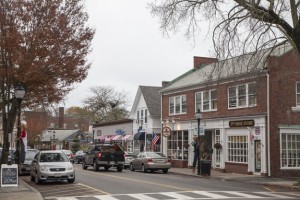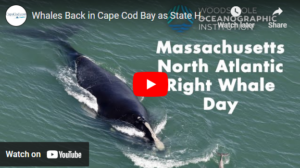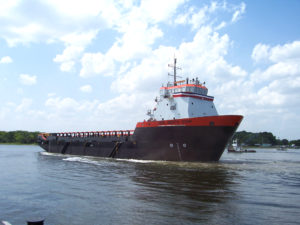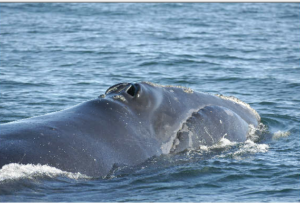Hidden among the 50 or so miles of sandbars between Chatham and Provincetown lie the remains of centuries of maritime shipwrecks. Those 50 miles of sea have been called an “ocean graveyard,” according to the National Park Service. In fact, between Truro and Wellfleet alone, there are said to have been over 1,000 shipwrecks.
The wrecks include, most famously, the HMS Somerset, the Sparrow-Hawk and the Whydah. Some of the vessels were involved in wars and other major historical events during their time on the high seas. A number of the ships originated in other countries, but their final resting place became the treacherous waters off the coast of the Cape. While there are innumerable wrecks off our coast, here are just a few of the most famous ships resting in our very own ocean graveyard.
According to the National Park Service, the first recorded wreck off the coast of Cape Cod was the Sparrow-Hawk, which ran aground at Orleans in 1626.
Originally from London, England, it was making a six-week voyage to the English Colonies when it was wrecked. The skeleton of the ship was recovered in 1863 and has been reconstructed for various exhibitions. The reconstructed hull currently belongs to the Pilgrim Society, and has been featured at the Cape Cod Maritime Museum in Hyannis.
Originally a slave ship that launched in 1716, the Whydah was captured by pirate Captain Samuel “Black Sam” Bellamy. The Whydah became Bellamy’s flagship, and enabled the pirate captain to capture multiple ships, including the Mary Anne, which was carrying a large cargo of wine. During its service as a pirate ship, the Whydah had to undergo numerous repairs to keep it serviceable. It eventually met its end off the coast of Wellfleet at Marconi Beach, when a powerful nor’easter struck and caused the ship to capsize. Its entire crew and all of its contents – including silver and gold – were lost to the ocean. In 1984, treasure hunter Barry Clifford discovered the wreck spread over a span of four miles along the Cape’s coast.
The USS Merrimack, originally launched in 1798, did battle in the Quasi-War, an undeclared war fought almost entirely at sea between the United States and the French Republic from 1798 to 1800. During its service, the ship captured a number of French vessels and exchanged fire with French troops. After her service in the Navy, the ship was sold and became a merchant vessel known as Monticello. It wrecked off the coast of Cape Cod at an unknown date.
The USS Bancroft, which launched in 1919, was the second ship to carry the name. The ship stayed in reserve until the start of World War II. In 1940, the Clemson-class destroyer was transferred to the Royal Canadian Navy and served under the name HMCS St. Francis. During the war she served as an escort for convoys in the Battle of the Atlantic. Once the war was over she was declared surplus and was sent to be scrapped. On its way to Baltimore the ship sunk due to a collision off the coast of Cape Cod.
The Paul Palmer was a schooner built and launched in Maine in 1902 and was used in the New England coal trade. During one of its voyages to pick up a load of coal, it caught fire for an unknown reason, forcing its small crew to abandon ship. The entire crew was saved by a fishing boat. The wreck of the Paul Palmer lies off the coast of Provincetown and was added to the National Register of Historic Places in 2007.
The British Royal Navy’s HMS Somerset launched in 1748. The ship participated in two wars, the Seven Years’ War and the American Revolution. In 1778, the ship ran aground during a storm off of Provincetown. The National Park Service currently preserves some of the remaining large timbers from the wreck.
The SS James Longstreet was built in the US during World War II and was named after the Confederate General James Longstreet. The ship was launched in 1942, but ran aground in 1943. In 1944, the Navy decided to use the ship for target practice for experimental missiles. Until 1971, the ship was continually bombarded, serving as a target Naval jets from Otis Air Force Base. The Navy eventually stopped the bombing in the 1970s under pressure from former Congressman Gerry Studds, and the remains of the Longstreet currently rest off the coast of Eastham.
The Andrea Doria was launched 1953. It was a premier luxury liner of its day. The ship had completed 100 transatlantic voyages by July 25, 1956, when human error set it on a collision course with the icebreaker bow of the Stockholm off the coast of Nantucket. The impact left the Andrea Doria taking on water and listing so sharply to the side that half of its lifeboats were inaccessible. Other ships in the vicinity responded quickly and were able to rescue all but 46 of the approximately 1,700 people on board (five people aboard the Stockholm were also killed). Just after 10 o’clock the next morning, the giant ship disappeared into the sea. She now sits in 240 feet of water and has become a popular, if perilous, diving destination. It’s said she has claimed the lives of 16 divers.
Back in 1797, the Massachusetts Humane Society started putting up huts along the most dangerous sections of the Massachusetts coast in the hope that stranded sailors would find them and take shelter. It was not, however, until 1872, that a really efficient lifesaving service was put into operation by the United States government. Stations were erected every five miles on the beach. Six or seven surfmen and a keeper lived in each station and kept a continuous lookout. At night, two men from each station walked the beach on patrol, met at a small half-way shelter between stations, and then returned on their same route. The Old Harbor Life Saving Station at the east end of Race Point is still standing. Currently, it was restored to its original condition, complete with lifesaving equipment.
The Massachusetts Board of Underwater Archaeological Resources (BUAR) is the state agency responsible for protecting the historical value of Massachusetts shipwrecks. Several years ago the Massachusetts BUAR created an “Exempt Shipwreck List.” The purpose of creating this list was to reserve certain wreck sites for the continued enjoyment of recreational divers. You can find the list here.

























